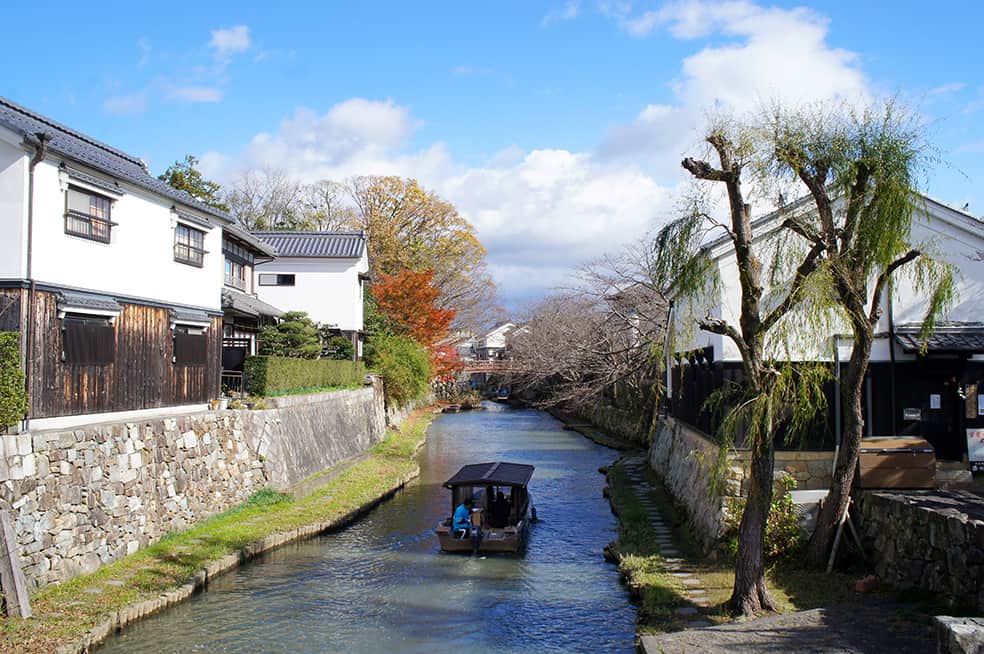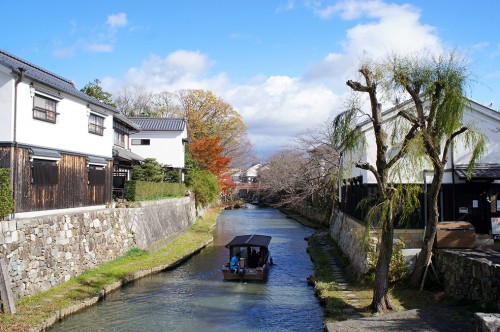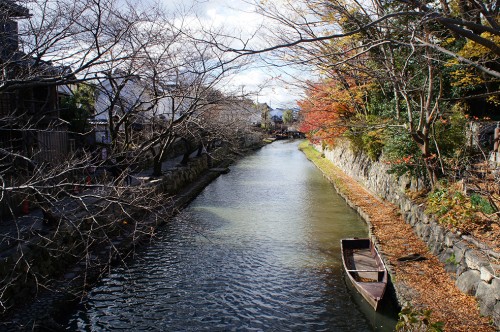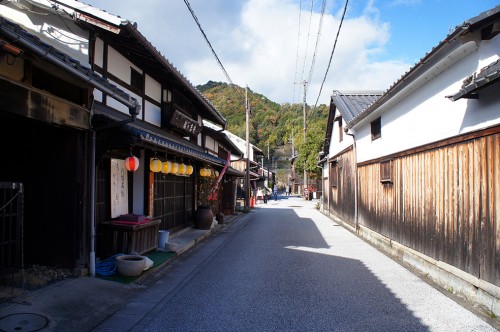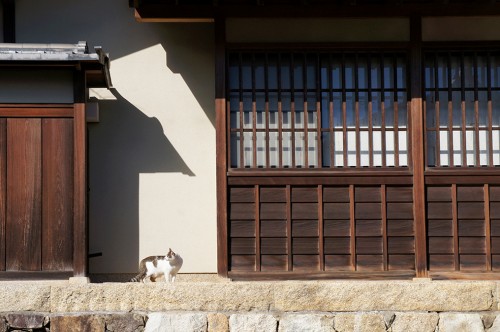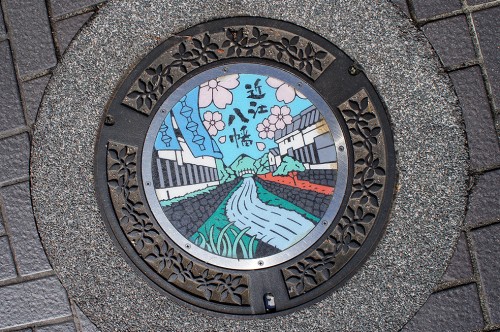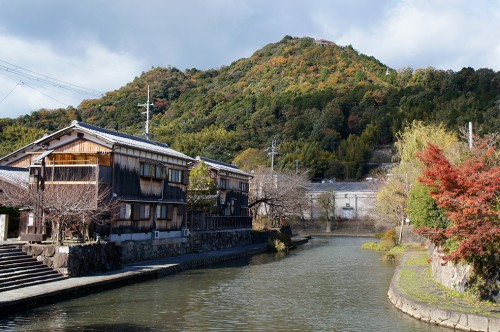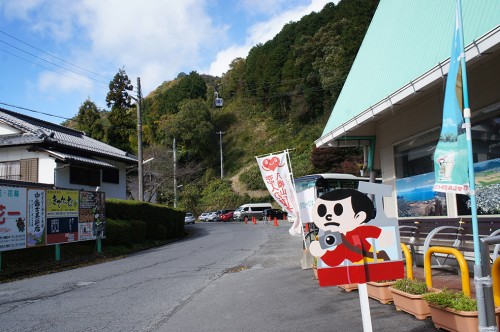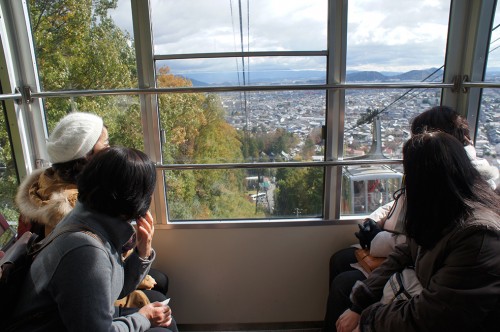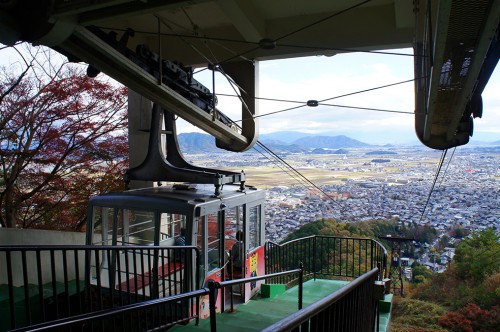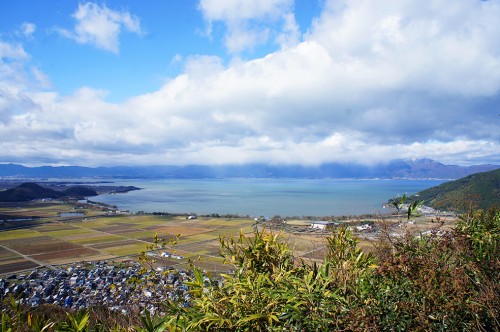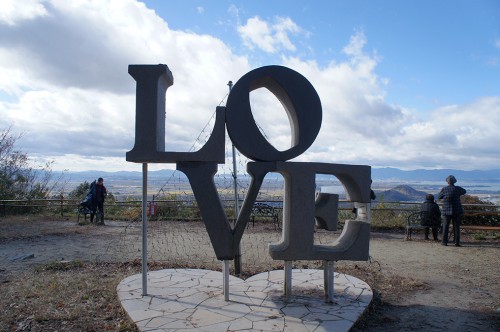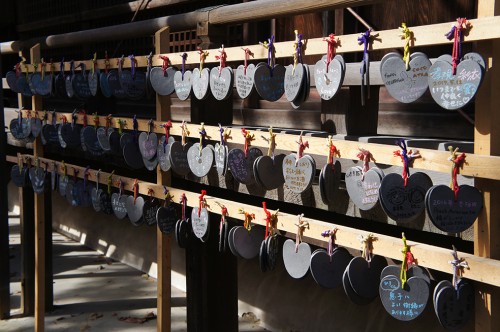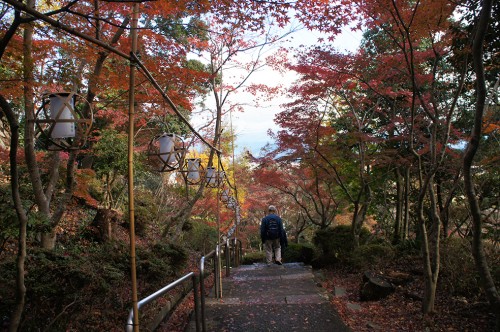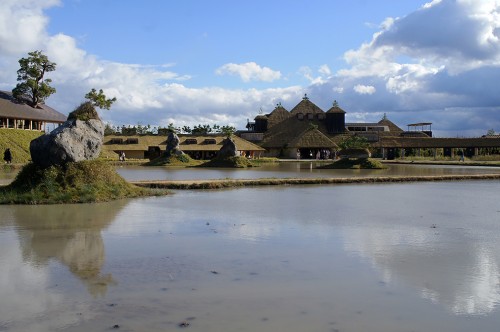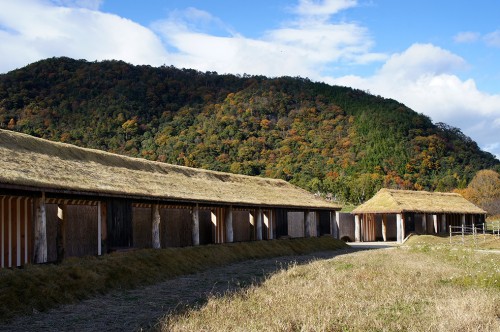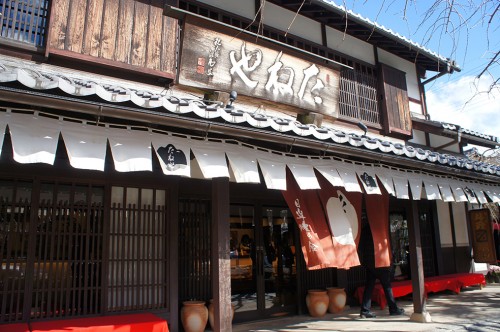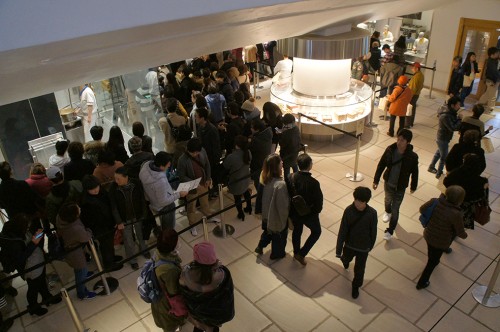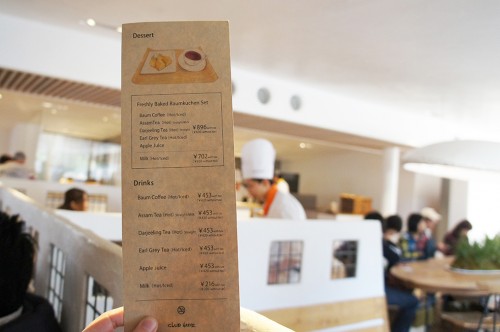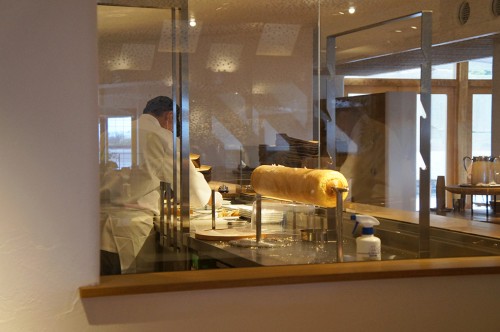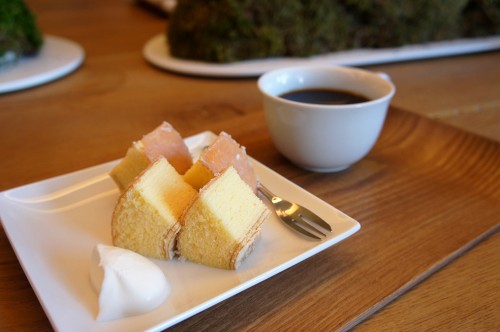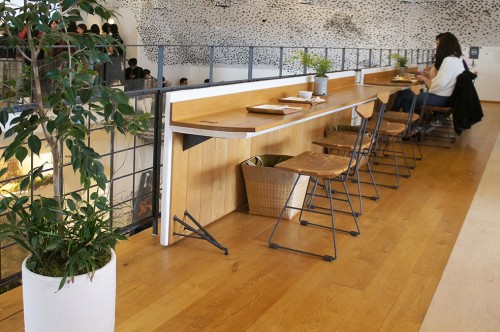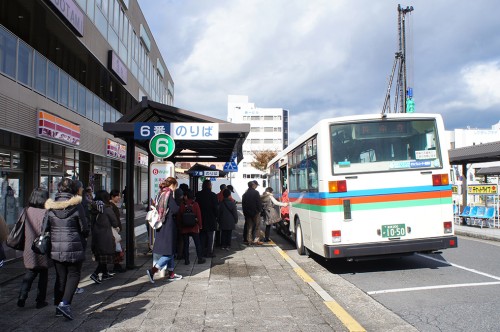Sponsored by Seibu Holdings Inc.
Omihachiman is a small town on the east shore of Lake Biwa, between Kyoto and Hikone. Still a lesser known place among foreign travelers, it has everything to seduce visitors: a canal and samurai residences dating from the Edo Period (1603-1868), breathtaking panoramic lake views, a temple dedicated to love, delicious pastries and even surprising architecture. Omihachiman walks a fine line between a preserved tradition and a modern respect of the past and the environment.
Omihachiman: Edo Spirit along the Canal
Omihachiman developed in the sixteenth century around the ruins of the castle of Toyotomi Hidetsugu. Before transportation systems were developed, the Hachimanbori Canal was at the heart of the commercial boom of the city, linking it to Lake Biwa.
During the Showa Period (1929-1989), there was talk of relocating but the mobilization of the inhabitants saved this area. Thanks to the preservation, it is now the main attraction of the city, with small boats offering town tours, and visitors can also enjoy walking along the canal’s edge to admire the cherry trees, irises or autumn foliage depending to the season.
Mount Hachiman: Admire Lake Biwa from the Top
From the canal, you can see Mt. Hachiman, which stands between the city and Lake Biwa. And if you look carefully, you can see the cable car that reaches the top. Note that if you have the time and the desire, it is also possible to walk to the top of Mt. Hachiman.
But it is on the other side that the panorama is the most beautiful: at the foot of Mt. Hachiman lies the largest lake in Japan, Biwa-ko. The place is considered romantic, and rightly so. A sculpture depicting the word LOVE was installed at the top to immortalize the romantic nature of the mountain.
For the continuation of visitors romantic aspirations, or, if visitors come alone, the hope to return in the future with someone special, it is possible to deposit a wish on an ema, a votive plate, in the form of a heart in the Zuiryu-ji Temple before returning to the bottom again.
The temple sometimes holds cultural events, such as nocturnes during koyo – the moment of autumn colors – to admire the foliage in the light of lanterns.
Excellent Baumkuchen at La Collina
The main building of La Collina (ラ コ リ ー ナ) was designed by Terunobu Fujimori. This architect and historian of Japanese architecture is known for his eccentric constructions, for which he uses natural materials and ancestral techniques. You can understand very quickly why this building, with a roof covered with grass and raised pyramids, is called “hill”!
The place is simply magical. Despite the crowd – I went on a Sunday at peak time – there was a feeling of serenity, very “zen.” This is a place where you want to take your time. So I recommend you do so.
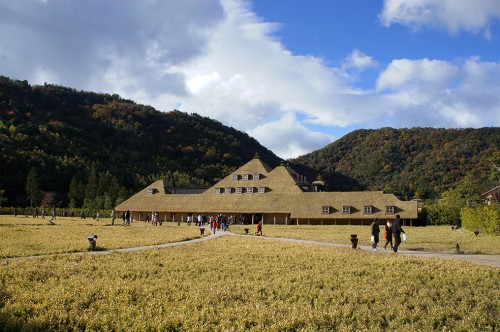
Once finishing a tour at the “hill,” a question remains; what is La Collina? To complete the perfection of this wonderful city, La Collina is dedicated to pastries, my favorite! La Collina was built by the Taneya group, who have been based in Omihachiman since 1872. The shop sits along the canal, and offers delicious pastries to guests visiting from near and far.
This bakery is dedicated to baumkuchen which was introduced to Japan around 60 years ago. This German spit cake has become extremely popular, and nowadys you can find them at any konbini. Those found at La Collina offer visitors the chance to see how the pastries are cooked, and of course, they have many different kinds of products as well.
You can taste the pastry along with La Collina’s own unique brew of coffee, accompanied by a little whipped cream.
The baumkuchen, ultra-fresh, melting and covered with a very fine frosting, is perfect. After having tasted it, you can buy it in the shop, in classic or “revisited” form, as well as castella (a Portuguese pastry also very popular in Japan) and various other desery items.
Again, the decor is both natural and modern: the plants are ubiquitous and the blackheads that cover the ceiling are pieces of coal!
General Information
The Omihachiman Tourist Office offers a pdf brochure in English that lists places to visit, events, and all the necessary practical information you might need when visiting.
For more information on the Omihachiman cable car, visit Ohmi Railway (in Japanese). The cable car runs from 9:00 a.m. to 5:00 p.m. (last climb at 16:30) with departures every 15 minutes.
Fare: adult, ¥ 880; child from 6 to 12 years, ¥ 440.
For more information about La Collina, you can visit the Taneya website. This site (which currently exists only in Japanese) presents the many activities that take place in La Collina. Opening hours: every day from 9:00 a.m. to 6:00 p.m. (last order at the cafe is at 5:00 p.m. ). Attention: La Collina is very busy on weekends and holidays, so it is better to go there during the week.
For more tourist information to prepare for a trip around Lake Biwa, you can also visit the website of the Shiga Tourism Office.
How to Get There ?
Omihachiman Station is about 30 minutes from Kyoto and 1 hour from Osaka by train on the JR lines.
Omihachiman is also served by the lines of the company Ohmi Railway, on which I wrote an article. The company’s 2-day Pass gives you access to the buses that connect the various points of the city.
The visit can also be done on foot: About 25 minutes between the station and the historic city, then 15 minutes to La Collina.
Original article by Clémentine Cintré
Translated by Aika Ikeda


